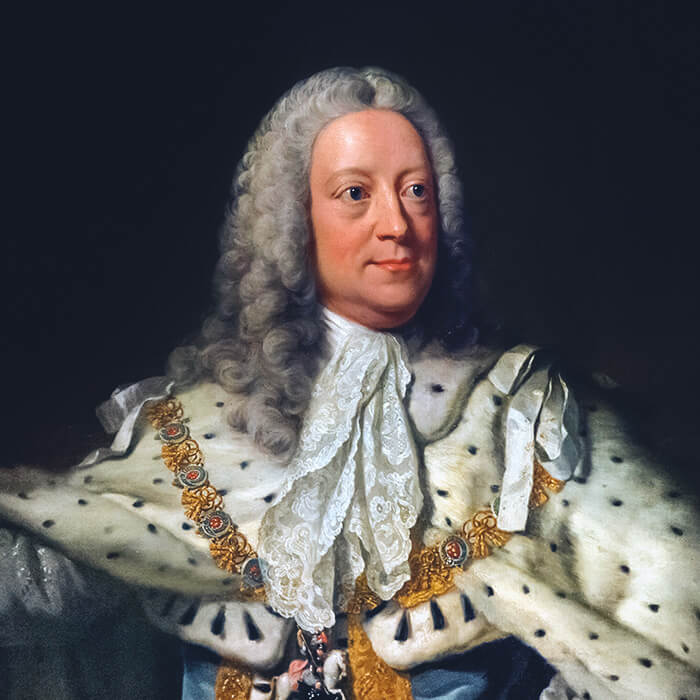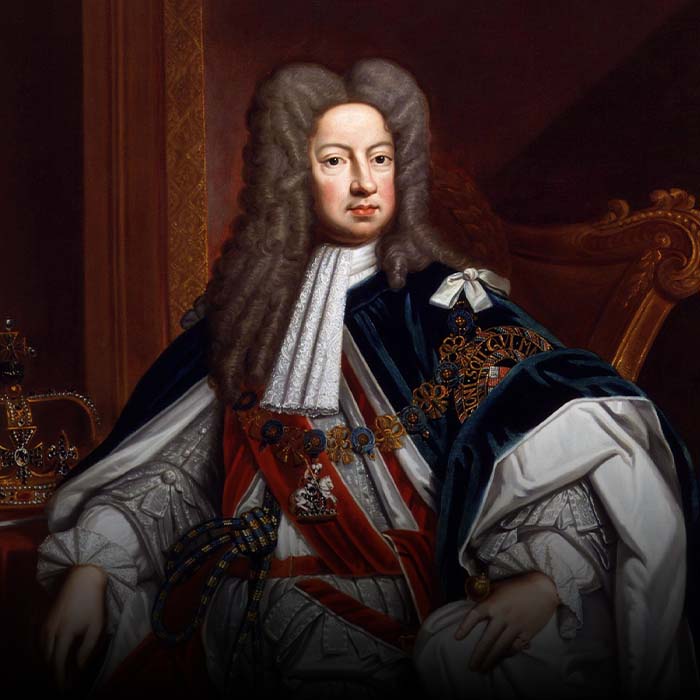The British Monarchs Collection draws on more than 500 years of history to reimagine the coinage portraits of legendary monarchs. Using real coins from the reign of each respective monarch as inspiration, The Royal Mint’s Product Design team have used modern minting techniques to recreate the coinage portraits in beautiful detail.
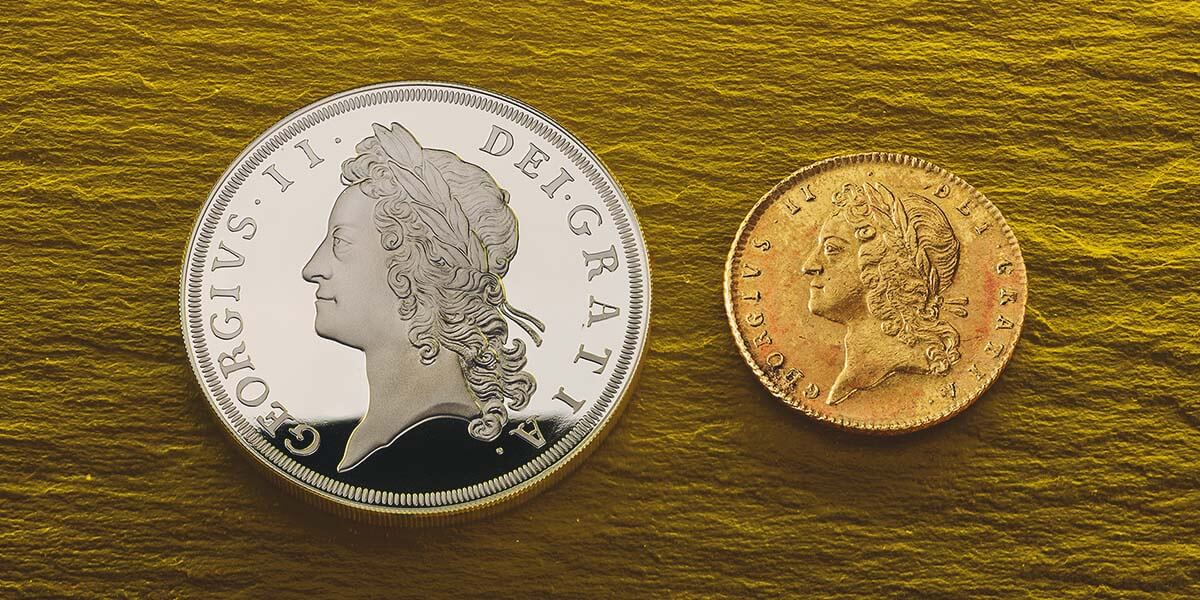
The latest monarch to be remastered as part of The British Monarchs Collection is George II and is the latest release for the House of Hanover. A five-guinea piece was used as inspiration for recreating the coinage portrait of George II for The British Monarchs Collection, featuring the young head portrait originally designed by John Croker.
George II acceded to the throne in 1727 and broadly three coinage portraits were used during his reign. There is some variation between the coinage portraits used at the time, but these can largely be sorted into the younger head, intermediate head and older head portraits. One variation on the coinage at the time was a cuirassed bust of George II that appeared on copper coins until 1739, which was also designed by Croker.
John Croker designed the younger head portrait that has been remastered as part of The British Monarchs Collection. Croker had also worked on the coinage portraits of previous monarchs, including Queen Anne and George I. Originally born in Dresden, Croker came to England in 1691 and started his career at The Royal Mint in 1697 as an Assistant Engraver. He then became the Chief Engraver in 1705, working on a variety of projects throughout his time in the role.
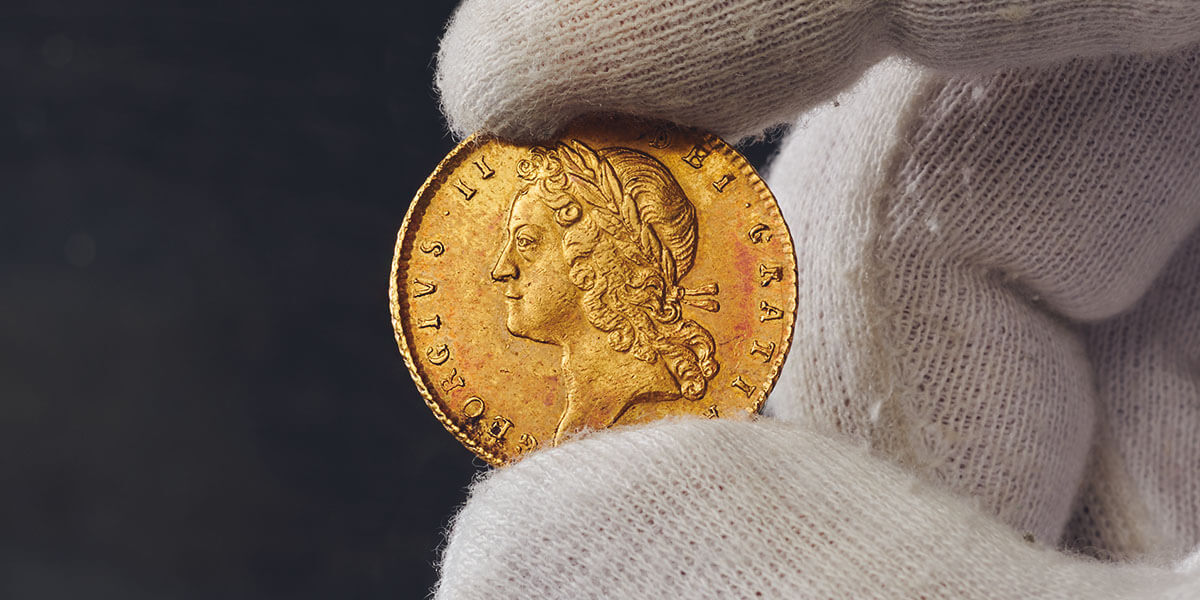
Whilst he was Chief Engraver at The Royal Mint, Croker was the only person who had experience with producing punches and dies for the obverse of coins. As he aged, Croker needed an assistant to help produce the punches for the reverses of coins. The Master of the Mint wrote to the Lords of the Treasury to secure employment for John Sigismund Tanner in this assistant role:
“Mr John P Croker, the only one now living who has hitherto made Puncheons for the Heads on the Coin, being advanced in years, as is also his assistant Mr Ochs, who graves the puncheons for the Arms, and the art of embossing in steel being little followed in England, and the science of making puncheons and dies for coin, which requires great experience, not to be practiced anywhere but at the Mint under penalty of High Treason, I beg leave to recommend John Sigismund Tanner, who is a protestant, has the character of being very honest, sober and industrious, is but 24 years of age and has shown several specimens made properly by him for a Trial that he is further advanced in the art of taking a likeness and embossing in steel than any who have offered themselves for his Majesty’s Service.”
Master of the Mint’s letter to the Lords of the Treasury to gain employment for Tanner.
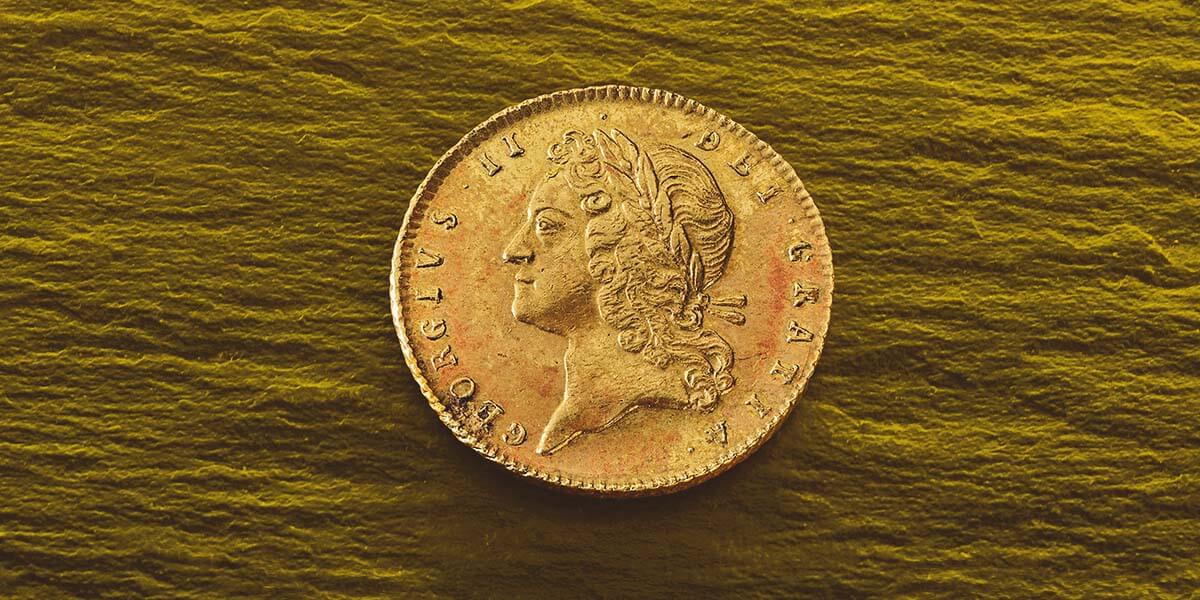
Tanner was appointed as an assistant to Croker in 1729, and then became responsible for creating the reverse dies. He continued to do this until he replaced Croker as Chief Engraver. John Sigismund Tanner had also been born abroad in Saxe-Coburg and learnt his skills in engraving by working on smaller items, such as snuff boxes and gun locks. He travelled to England around the year 1726.
At the age of 69 in 1739, Croker had become too infirm to produce the tooling for the new dies which would depict an older George II. Croker died in 1741, and Tanner replaced him as Chief Engraver, working on the older coinage portrait of George II.
The original work of John Croker has been beautifully reimagined by The Royal Mint’s Product Design team. Product Designer Kerry Davies explains the process.
“We worked closely with The Royal Mint Museum to recreate a coin that would be faithful to the original. The historic coin is first scanned. A rubber mould is taken directly from the historic coin, which is then scanned so that the portrait can be recreated digitally.
“I work on this digital copy to remove the noise from the original coin, such as blemishes that have occurred over time. I traced around the letters of the coin as best as possible, then worked on recreating the beading around the edge of the coin.
“The beads that appear along the edge of the remastered George II coin are imperfect, but have been created in this way to represent the best example of what would have been achievable during the time the original coin was produced.
“There is also a thin edge around this remastered coin to give a nod to the era in which it would have first been created. We don’t want to take away any beauty from the original coin so try to avoid adding in more detail. The aim of remastering this design is to highlight the features that already existed.”

